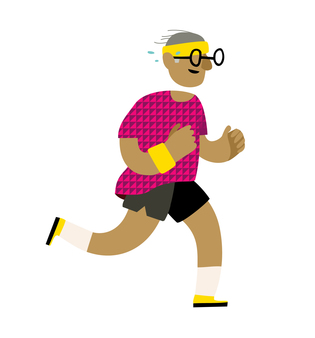
Alex Eben Meyer
Exercise is often touted as the secret to a long and healthy life. Whether you’re hitting the gym or taking a walk in the park, research has shown that staying active can keep your bones and muscles strong and improve your heart health.
For people with Parkinson’s disease (PD), physical activity can also be a tool to stem the progression of devastating symptoms. Exercise promotes balance, strength, and coordination—all of which are jeopardized by the neurodegeneration that characterizes PD. Clinical trials have underscored the value of exercise for people with PD, showing that high-intensity exercise can slow the development of movement difficulties such as muscle tremors and stiffness.
To Sule Tinaz, a neurologist at the Yale School of Medicine, these studies left an important question unanswered: is exercise actually healing the brain? To find out, she teamed up with Michelle Hespeler, founder of a Connecticut-based nonprofit named Beat Parkinson’s Today. Together, they conducted a proof-of-concept study that was published in the journal npj Parkinson’s Disease.
Hespeler herself was diagnosed with PD more than a decade ago, and she now offers a successful series of exercise classes specifically designed for people with PD. The researchers recruited ten people with mild PD to participate in the high-intensity interval training classes of Beat Parkinson’s Today. The group gathered virtually (aka online) three times a week for six months. Tinaz scanned participants’ brains before and after the six-month period, to measure markers of healthy dopamine-producing neurons—particularly in the substantia nigra, the part of the brain that contains dopaminergic neurons and is primarily affected by PD.
Tinaz was intrigued to find that the markers actually increased after six months of regular exercise. In other studies of people with PD, the markers typically decrease over time. “Whatever remaining dopaminergic neurons these people have, they seem to be functioning better,” she says. “That is a really exciting finding that suggests that the neurons become healthier.”
Tinaz plans to run a larger, randomized, and controlled trial to confirm these trends. She also wants to measure how exercise affects cognitive abilities. But she believes exercise has already earned a place in PD treatment plans, because, unlike medications—which only manage symptoms—exercise seems to slow disease progression.
“We prescribe medication for people to control their symptoms,” Tinaz notes. “We should also be prescribing exercise.”
 loading
loading
1 comment
-

Caroline McGaughey, 1:30pm June 24 2024 |  Flag as inappropriate
Flag as inappropriate
The comment period has expired.My Partner, who is 66 years old, was diagnosed with Parkinson's disease last year. We noticed that he was experiencing hallucinations, slow movement, disturbed sleep, and twitchy hands and legs when at rest. He had to stop taking pramipexole (Sifrol), carbidopa/levodopa, and 2 mg of biperiden because of side effects. Our family doctor recommended a PD-5 treatment from natural herbs centre com, which my husband has been undergoing for several months now. Exercise has been very beneficial. He has shown great improvement with the treatment thus far. He is more active now, does more, and feels less apathetic. He has more energy and can do more activities in a day than he did before. As far as tremors I observe a progress, he improved drastically. I thought I would share my husband's story in case it could be helpful, but ultimately you have to figure out what works best for you. Salutations and well wishes